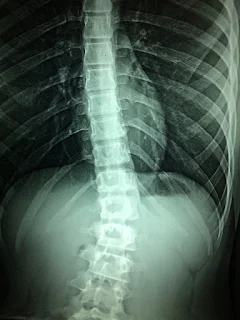by Jordyn Whitman If you suspect you have a spinal tumor, or would like options with your current condition, our specialists at Texas Bac...
by Jordyn Whitman
If you suspect you have a spinal tumor, or would like options with your current condition, our specialists at Texas Back Institute are here to help you get your life back.
A Neurology department is especially concerned with spine tumors. When there is a tumor on the spine, patients usually complain of a constant ache or pain around where it is placed, plus shooting pain when body movement occurs.
A spine tumor, put simply, is a mass (growth of cells) inside or around the vertebrae of the spine or just the spinal cord. There are two types of tumors physicians look for: benign and malignant. Benign tumors are the ultimate hope, as they do not spread from their location. However, they can still be aggressive locally, so they are still treated seriously so doctors can get you and your spine healthy again.
Malignant tumors are cancerous and are able to grow and spread their cancerous cells beyond their original location. However, whether or not it ends up growing, a tumor located on the spine is life threatening or could cause a disability. Therefore, each case is treated with importance and the neurosurgeons will work overtime on your case for the best possible outcome.
Other than feeling pain from the site of the tumor, other symptoms include nerve compression that makes the limbs feel week or sore, increased back pain when laying or sitting down, and chills and night sweats when sleeping. Sometimes there is no pain at all. The tumors are diagnosed by an evaluation of the spine. Starting with a classic physical examination, your neurologist will check your spine any tenderness, internal or external sweeping, and measure the strength of your limbs and back. Further examination that can be done includes testing your senses such as pain and pressure sensitivities, motor strength, and your natural reflexes. Sometimes x-rays are necessary to diagnose the size and type of tumor, and a further MRI will be ordered to examine if it is localized or spreading.
Depending on the size and type of tumor will depend on what the best treatment options are for your unique case. Sometimes small, benign, non symptomatic tumors are not treated further than keeping an eye on them. If the tumor has spread to the spine from other sites within the body (known as metastatic tumors), then your neurologist will suggest radiation or chemotherapy for treatment. Tumors that cause pause that interfere with your daily activities are treated in surgery for removal, while working with restoring the nerves and spinal curvatures. Surgery helps the patient maintain or gain strength all of their body, prevent paralysis and progression , and improve the overall function of the spine.
, and improve the overall function of the spine.
Source: Free Articles from ArticlesFactory.com
If you suspect you have a spinal tumor, or would like options with your current condition, our specialists at Texas Back Institute are here to help you get your life back.
A Neurology department is especially concerned with spine tumors. When there is a tumor on the spine, patients usually complain of a constant ache or pain around where it is placed, plus shooting pain when body movement occurs.
A spine tumor, put simply, is a mass (growth of cells) inside or around the vertebrae of the spine or just the spinal cord. There are two types of tumors physicians look for: benign and malignant. Benign tumors are the ultimate hope, as they do not spread from their location. However, they can still be aggressive locally, so they are still treated seriously so doctors can get you and your spine healthy again.
Malignant tumors are cancerous and are able to grow and spread their cancerous cells beyond their original location. However, whether or not it ends up growing, a tumor located on the spine is life threatening or could cause a disability. Therefore, each case is treated with importance and the neurosurgeons will work overtime on your case for the best possible outcome.
Other than feeling pain from the site of the tumor, other symptoms include nerve compression that makes the limbs feel week or sore, increased back pain when laying or sitting down, and chills and night sweats when sleeping. Sometimes there is no pain at all. The tumors are diagnosed by an evaluation of the spine. Starting with a classic physical examination, your neurologist will check your spine any tenderness, internal or external sweeping, and measure the strength of your limbs and back. Further examination that can be done includes testing your senses such as pain and pressure sensitivities, motor strength, and your natural reflexes. Sometimes x-rays are necessary to diagnose the size and type of tumor, and a further MRI will be ordered to examine if it is localized or spreading.
Depending on the size and type of tumor will depend on what the best treatment options are for your unique case. Sometimes small, benign, non symptomatic tumors are not treated further than keeping an eye on them. If the tumor has spread to the spine from other sites within the body (known as metastatic tumors), then your neurologist will suggest radiation or chemotherapy for treatment. Tumors that cause pause that interfere with your daily activities are treated in surgery for removal, while working with restoring the nerves and spinal curvatures. Surgery helps the patient maintain or gain strength all of their body, prevent paralysis and progression
Source: Free Articles from ArticlesFactory.com










No comments